Timber sliding sash windows can add elegance and charm to your home and even increase the property value.
However, this is only true if your windows are properly maintained.
For all their charm and beauty, original timber sash windows are often unsuitable for the rigours of modern living. They can be draughty and poorly insulated, leading to high heating bills and a large carbon footprint.
In this blog, we’ll outline some of the common issues with sash windows and how to fix them, plus offer some replacement suggestions for when your sash windows are beyond repair.
Repairs v Replacements
Your original timber sash windows may require some TLC rather than a replacement. Professional fitters, such as ours, can help you decide whether it is better to remove the whole window and frame and start again or make improvements, such as double glazing.
Not only does restoration lower the price, but it means your house retains its original windows with the conveniences of contemporary technology. You can repair frames and update the glass to double or even triple glazing to improve energy efficiency.
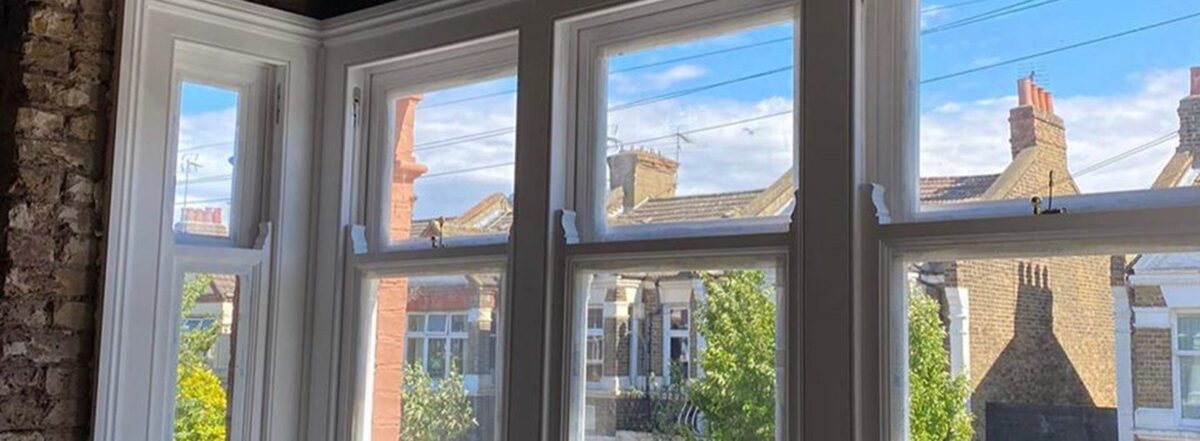
What are common issues with timber sash windows? How do I fix them?
1. Weather damage
Sash windows must be weather-resistant to prevent water ingress and damage, especially in harsh climates. Timber must be pre-treated to remove moisture, repel insects and prevent fungi, which can rot the wood.
Only consider sash windows that are highly weather-rated, such as ours, to ensure that your windows can withstand the great British weather for many years.
You can also add years to the lifespan of your window by investing in a quality wood preservative.

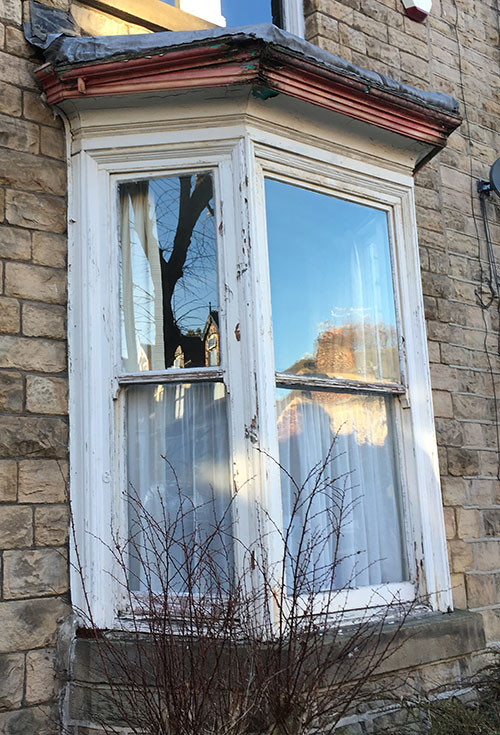
2. Flaking Paintwork
Over time, paint can flake off due to weather exposure, requiring regular maintenance. If your windows need repainting, fill in any gaps with wood filler and sand the windows down to remove the flaking paint before applying a new coat. You can paint sash windows either in situ or by removing them, taking them apart and painting them, then putting them back together. Make sure the paint is suitable for the exterior and interior.
3. Loose Corner Joints
Ageing or poor construction can cause the joints of sash windows to become loose, leading to draughts and instability. If the joints aren’t too badly damaged and retain enough structural integrity, you can usually fix them. You’ll need a small syringe (no needle) that you can get from chemists, a drill and some polyurethane adhesive. Plus coveralls and some rags. Drill some small holes where they are required (typically down the sides of the tenons), then use the syringe to insert your wood glue. If there has been some rot, first inject a wood hardener, leaving it to cure before injecting the glue.
4. Draughts and Poor Insulation
Gaps between the frame and the sash can lead to drafts, reducing energy efficiency.
To fix the problem, clean the area and remove the old sealant and any rotten wood. Fill in gaps with a good-quality wood filler, then apply a new water-tight seal.
5. Rotting Wood
Timber frames are susceptible to rot if not properly maintained. The more the rot has set in, the bigger the problem. However, it is possible to repair rotted windows using video tutorials. You’ll need to remove the rotten wood first then allow the sash to dry out before filling and scaling it using epoxy to strengthen the wood.
Since sash windows are exposed to various weather conditions and are susceptible to rotting as they age, it is important to give them some care and attention on a semi-regular basis – cleaning and filling in any gaps.
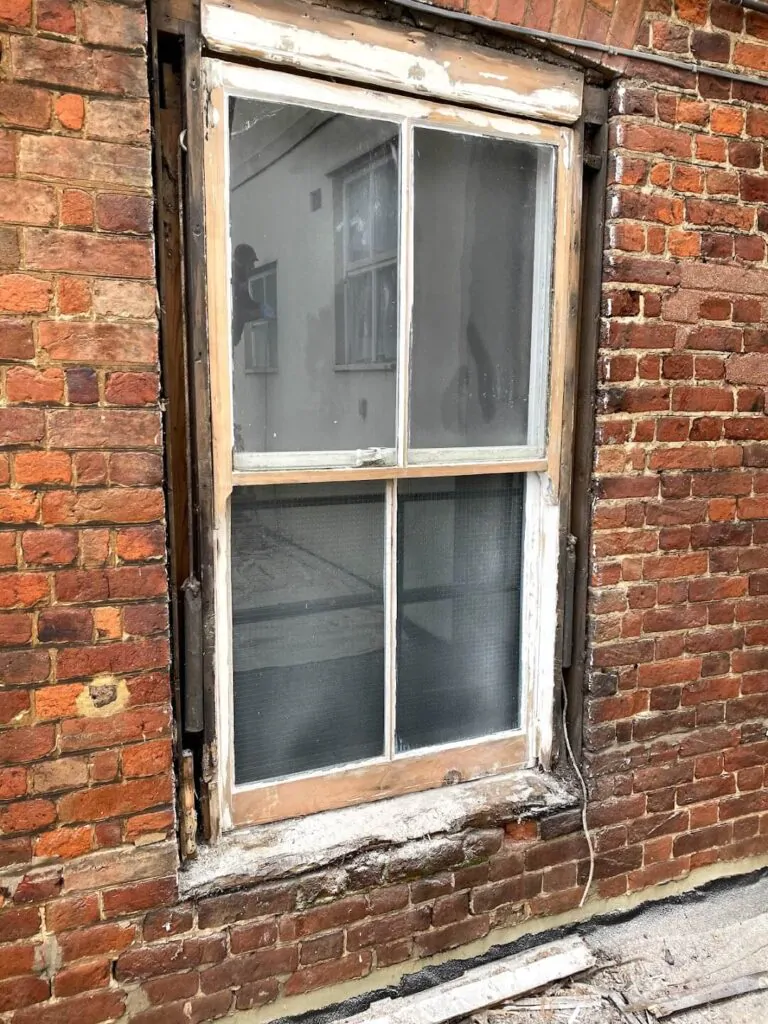
6. Sticking or Jamming
Paint buildup or swollen wood can cause the sash to stick, making it difficult to open or close. Many people assume it is the moveable sash that has expanded, so trim it down. But the inner and outer lining of the box frame can also expand. To determine the source and fix the problem, remove the sash from the frame and strip the paint to enable it to dry out. This can take a couple of weeks, but the sash should revert to its original form. To finish, repaint the sash with a water-based primer and paint designed for wooden exteriors.
7. Broken Cords or Weights
Over time, the cords or weights in traditional sash windows can break, affecting the window’s functionality. Fortunately, fixing these parts is not a complicated job, though it can be a bit fiddly!
Traditional sash windows have parting beads holding the sliding windows in place, including a stop bead at the front. Remove the beads and the window to reach the weights and cords, located in side panels. Run a Stanley knife along the joint to prevent paint chipping. Then chisel off the outer stop bead and lift the inner sash from its frame. If it is the outer sash that has the damaged cord, remove that too, otherwise, leave it in.
Pull off the weight cover and take out the nails that secure the broken cord to the side of the sash. Get your new cord (preferably waxed) tie a piece of string to it and feed it over the pulley. Secure the end of the cord and untie the string. Feed the cord back down into the weight box and tie the weight back on the new cord.
8. Rattling:
Loose windows can rattle, especially during windy conditions. Not only is the noise disruptive, but it can damage the window frame if it continues.
There are a couple of ways to stop this, depending on the cause:
- Caulk in loose glass
- Repair or replace a loose sash
- Secure your windows with weather-stripping
- Repair any rotten parts
- Adjust the mortise plate (the catch that keeps your window closed)
Hopefully, these tips will increase the lifespan of your timber sash windows, but you may still need to replace them eventually.
Factors to Consider Before Committing to Replacement
1. What is my budget?
If a replacement is necessary, the initial outlay can be sizeable. You must carefully plan your budget, including units and installation costs.
Request at least three quotes to compare from reputable sash window replacement companies to ensure your budget is realistic.
Don’t forget to read reviews for the companies you are comparing. Cheap installation can be a false economy, as incorrectly fitted windows can cause many problems.
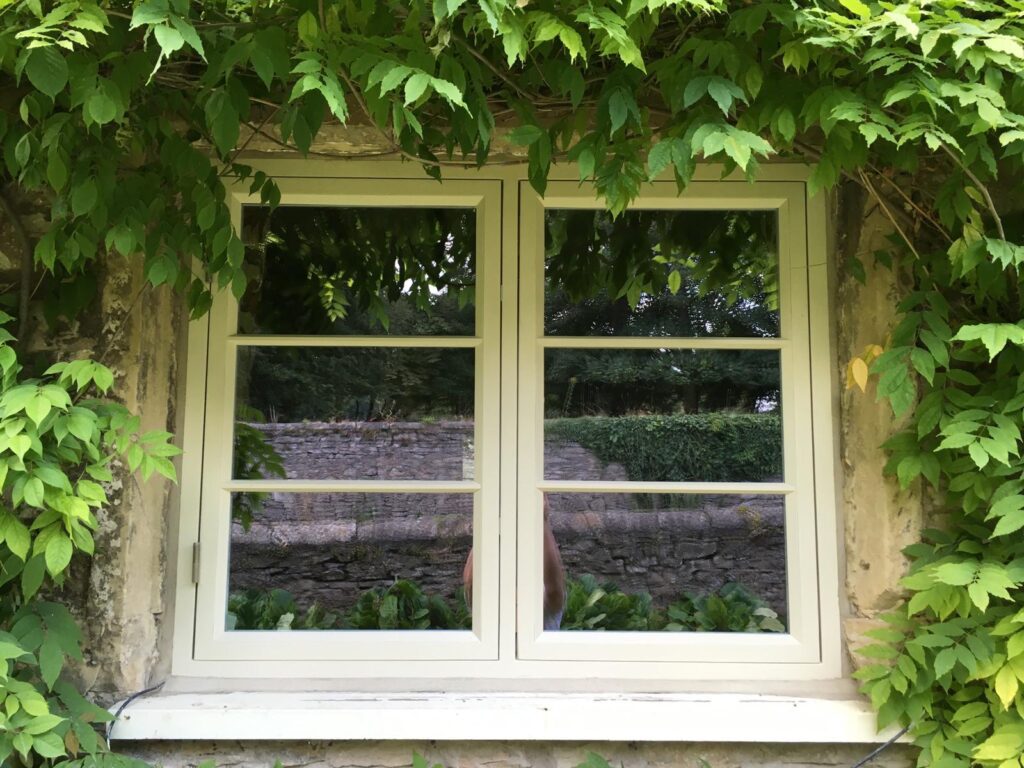
2. Do I need planning permission?
Most homeowners do not require planning permission to change their windows. However, there are a couple of exceptions, including:
- It’s listed building
- The building is in a conservation area
If you’re unsure, it’s best to contact your local authority before commencing any building work or renovations.
The Pros and Cons of Timber Sliding Sash Window Replacement
Pros
- It can install double, triple or other glazing options
- Improved energy efficiency
- Better insulation and ventilation
- Help regulate indoor temperatures
- Reduce condensation build-up
- British Police Standard Security
- Low-maintenance and easy-to-clean
- Retain the external charm of the original windows
- Offer high curb appeal
- It can increase your property value
Cons
- It can be expensive, particularly compared to casement windows
- It may require more maintenance and cleaning than other materials
- It can be vulnerable to insect attacks, depending on the wood and how it was treated
- It can be less durable than other materials, such as UPVC
Craftsmanship and Longevity: The Timber Advantage
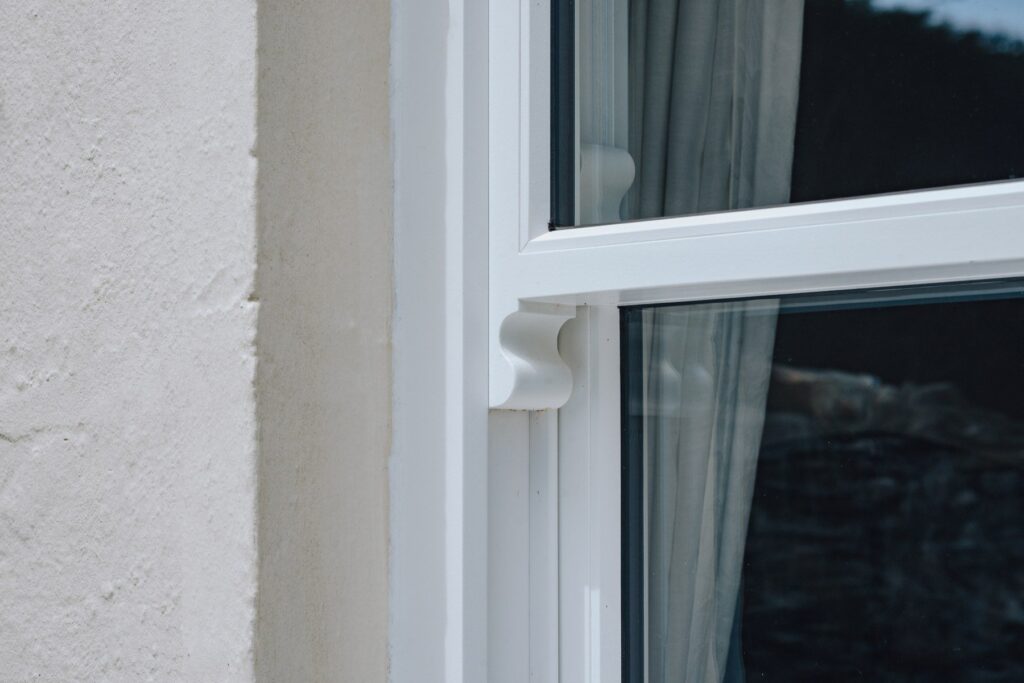
Not only are our timber sash windows energy-efficient and durable, but they also require very little maintenance.
The evolution to partially hidden tension springs makes your sash windows getting stuck a thing of the past.
Many of our sash windows include inward tilting, making them much easier to clean. The wood has also been treated to make it water-resistant, to guard against water spots, warping, and rotting.
We’re so confident in the longevity of our timber sliding sash windows that we offer a 10-year insurance-backed guarantee.
Our top-range timber sliding sash windows are now available in Accoya, a hardwood with a lifespan of around 50 years.
We also offer a customisation service, enabling you to tailor your sash windows to your specifications.
Get In Touch Today
At Manchester Window Factory, we are experts in providing and installing the highest quality UPVC, aluminium and timber windows. We can talk you through your options and offer a free, no-obligation quote for your consideration. We also offer a pay monthly scheme to help you spread the cost. If you would like further information on any of our products or services, please don’t hesitate to get in touch.
We look forward to hearing from you!




